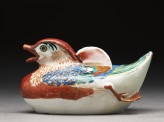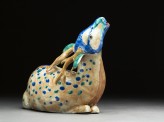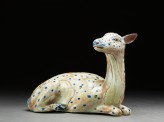Room 37 | Japan 1600-1850 gallery
Discover the arts of the Edo period (1600-1868) from porcelain to lacquer to painting.
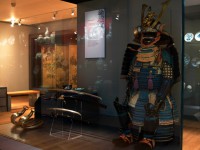
‘China over ye Chimney’: porcelain for display
From the late 1600s to around 1800, porcelain decorated many European stately homes. It was displayed on mantelpieces, shelves and lacquer cabinets. Pieces were usually arranged symmetrically, according to shape and colour, Japanese and Chinese porcelain often mixed together. A surviving 1688 inventory from Burghley House tells us how the porcelain was arranged ‘over ye chimney’ or ‘upon ye cabbenett’.
Kakiemon-style porcelain
The most prized export porcelain in the late 1600s – especially in Britain – was Kakiemon-style ware. Made at the Kakiemon workshop in Arita, it had a fine milky-white body and elegant decoration in brilliant, translucent enamels. It was much copied at European potteries such as Chelsea and Meissen.
 Hexagonal 'Hampton Court' jar (EA1978.688)
Hexagonal 'Hampton Court' jar (EA1978.688)
 Bottle in double-gourd form with birds and peonies (EA1978.686)
Bottle in double-gourd form with birds and peonies (EA1978.686)
 Baluster jar with flowers (EA1976.52)
Baluster jar with flowers (EA1976.52)
 Cup of petalled form (EA1978.600)
Cup of petalled form (EA1978.600)
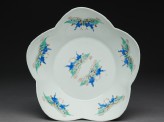 Lobed bowl with butterflies (EA1990.1239)
Lobed bowl with butterflies (EA1990.1239)
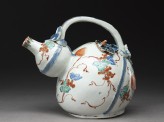 Gourd-shaped ewer with moulded vine leaves (EA1978.637)
Gourd-shaped ewer with moulded vine leaves (EA1978.637)
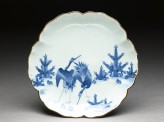 Petalled saucer with cranes (EA1978.713)
Petalled saucer with cranes (EA1978.713)
 Bottle with the 'Three Friends of Winter' (EA1978.695)
Bottle with the 'Three Friends of Winter' (EA1978.695)
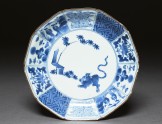 Foliated plate with tiger and bamboo (EA1978.744)
Foliated plate with tiger and bamboo (EA1978.744)
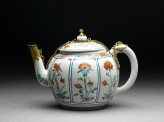 Teapot with European mounts (EA1978.658)
Teapot with European mounts (EA1978.658)
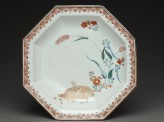 Octagonal dish with quails and millet (EA1978.574)
Octagonal dish with quails and millet (EA1978.574)
 Figure of two sumo wrestlers (EA1981.43)
Figure of two sumo wrestlers (EA1981.43)
 Figure of a boy seated on a shogi, or chess board (EA1978.670)
Figure of a boy seated on a shogi, or chess board (EA1978.670)
 Figure of dancing woman (EA1990.1242)
Figure of dancing woman (EA1990.1242)
 Figure of a man holding a fan (EA1960.10)
Figure of a man holding a fan (EA1960.10)
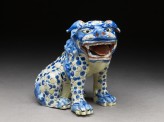 Figure of a shishi, or lion dog (EA1978.662)
Figure of a shishi, or lion dog (EA1978.662)
 Bowl with horses and English Empire-style mounts (EA1978.664.a)
Bowl with horses and English Empire-style mounts (EA1978.664.a)
 Bowl with horses and English Empire-style mounts (EA1978.664.b)
Bowl with horses and English Empire-style mounts (EA1978.664.b)
Notice
Objects may have since been removed or replaced from a gallery. Click into an individual object record to confirm whether or not an object is currently on display. Our object location data is usually updated on a monthly basis, so contact the Jameel Study Centre if you are planning to visit the museum to see a particular Eastern Art object.
© 2013 University of Oxford - Ashmolean Museum


